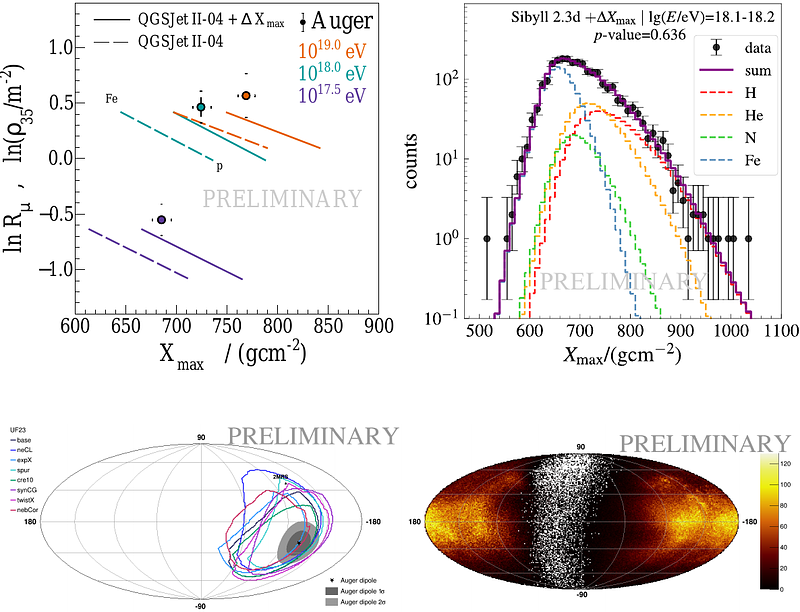Consequences of a Heavy-Metal Scenario of Ultra-High-Energy Cosmic Rays

Consequences of a Heavy-Metal Scenario of Ultra-High-Energy Cosmic Rays
Jakub Vícha, Alena Bakalová, Olena Tkachenko, Ana Laura Müller, Maximilian Stadelmaier
AbstractWe assume an extreme scenario, in which the arriving cosmic rays are composed of only iron nuclei at energies above $10^{19.6}\,\text{eV}\simeq40\,\text{EeV}$, while allowing a freedom in the scale of the depth of shower maximum ($X_{\rm{max}}$) and preserving the elongation rate and fluctuations of $X_{\rm{max}}$ predicted by models of hadronic interactions. We derive the shift of the $X_{\rm{max}}$ scale for QGSJet II-04 and Sibyll 2.3d models using the public data from the Pierre Auger Observatory. We then propose a new mass-composition model for the energy evolution of four primary species at the ultra-high energies by fitting the publicly-available $X_{\rm{max}}$ distributions. We discuss the consequences of this Heavy-metal scenario on the energy spectrum of individual primary species, hadronic interaction studies, and the effect of the Galactic magnetic field on the arrival directions.